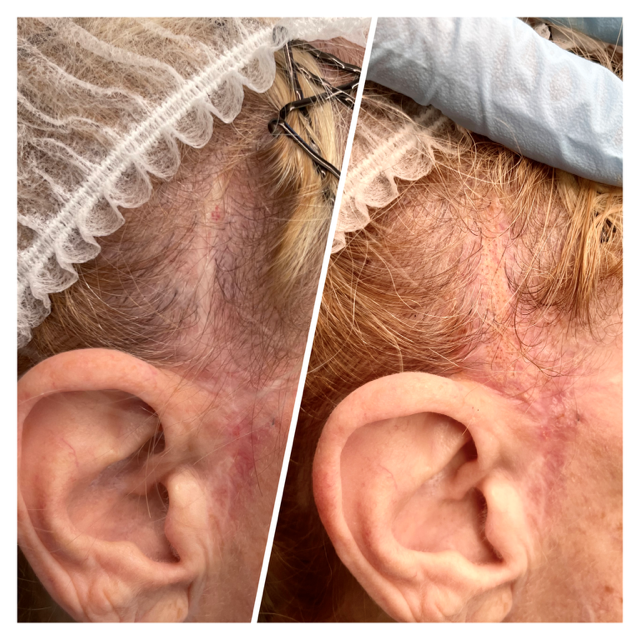Paramedical Tattooing
Left: Before
Right: Immediately after session.
Custom mixed pigments were tattooed into the incision scars to blend them into surrounding skin. Scalp scar also received stimpling to mimic hair follicles. Redness is common after session and will subside after a few hours. Final results can be assessed after 4 weeks of healing.
What is paramedical tattooing?
It is using cosmetic or traditional tattoo techinques to add skin toned pigments to the skin. Paramedical tattoo is commonly used to camouflage scars or strech marks, and in some cases burns and vitaligo, create 3d areola for those who have had breat reconstruction and lost their areola. It can also be used to recreate belly buttons after surgeries that have left patients without one.
Tattoo camouflage isn’t for all scars or strech marks. The techinque can only be done on scars 6 months healed, not raised or keilod. Scars that are hyperpigmented or hypopigmented should be carefully tested before an entire procedure is carried out. For many of these situations, test areas are recommneded.
Scar and stretch mark camouflage can improve the apprearance of the skin in two ways. First, the needle effects can acutally improve skin texture. Like microneedling, creating trauma to the tissue triggers the body to respond by producing collegen and elastin. Even melanin. It can soften scar tissue, reducing the apprearance and improving texture. Pigments that are matched to surrounding skin are implanted. This reduces the contrast between the scar and surrounding skin.
There are many options to reduce the apperarance of scars and strech marks, but none will elimate them. Good candidates for scar and stretch mark camouflage are surgical scars, burns, breast augmentation scars, c section scars, stretch marks, and hypopigmented skin.
Free consultations both in person and virtually for those who live outside of Ellicott City, MD.


